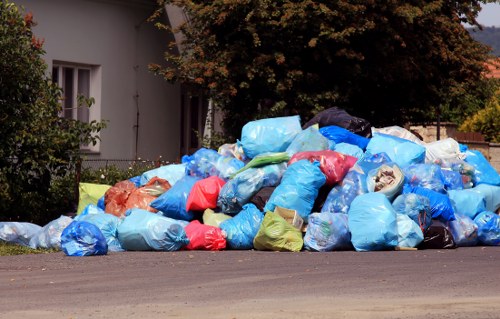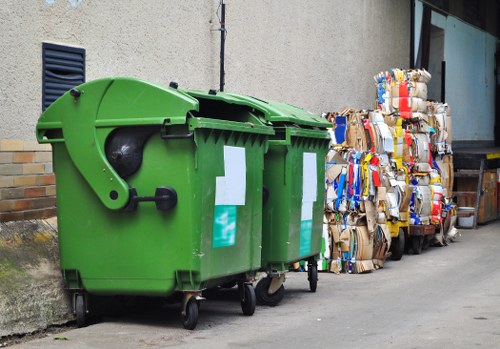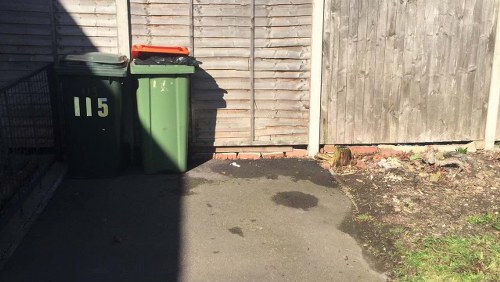Comprehensive Guide to Site Clearance in Whitechapel
Introduction to Site Clearance

Site clearance is a crucial step in any construction or renovation project. It involves the removal of vegetation, debris, and existing structures to prepare the land for new development.
In Whitechapel, a vibrant and historic area, site clearance requires careful planning and execution to preserve the character of the neighborhood while accommodating modern needs.
Understanding the local regulations and environmental considerations is essential for successful site clearance in this bustling part of London.
Importance of Site Clearance

Proper site clearance ensures that construction projects start on a solid foundation. It minimizes risks such as soil contamination, structural instability, and delays caused by unexpected obstacles.
In Whitechapel, where space is limited and property values are high, efficient site clearance can significantly impact the timeline and budget of a project.
Moreover, responsible site clearance practices contribute to environmental sustainability by reducing waste and promoting recycling of materials.
Steps Involved in Site Clearance

Initial Assessment
The first step in site clearance is conducting a thorough assessment of the property. This includes identifying existing structures, vegetation, and any potential hazards.
Obtaining Permits
Before commencing any clearance work, it's essential to obtain the necessary permits from local authorities. This ensures compliance with zoning laws and environmental regulations.
Clearing Vegetation and Debris
Removing plants, trees, and debris is a critical part of site clearance. This task must be performed carefully to avoid damaging nearby properties and to manage waste responsibly.
Challenges of Site Clearance in Whitechapel

Whitechapel presents unique challenges for site clearance due to its dense urban environment and historical significance. Navigating narrow streets and ensuring minimal disruption to the community requires strategic planning.
Additionally, older buildings may have hidden structural issues or hazardous materials like asbestos, which need specialized handling and disposal.
Maintaining clear communication with stakeholders, including local residents and businesses, is vital to address concerns and ensure a smooth clearance process.
Environmental Considerations

Environmental sustainability is a key factor in modern site clearance practices. In Whitechapel, efforts are made to minimize the carbon footprint by recycling materials and reducing waste.
Protecting local wildlife and preserving green spaces during clearance activities helps maintain the ecological balance of the area.
Implementing eco-friendly methods, such as selective demolition and using renewable energy sources for machinery, contributes to a greener community.
Choosing the Right Site Clearance Service
Experience and Expertise
Selecting a site clearance service with extensive experience in Whitechapel ensures that the team is familiar with local regulations and unique challenges.
Equipment and Technology
Modern equipment and advanced technology can significantly improve the efficiency and safety of site clearance operations.
Cost and Efficiency
Balancing cost with the quality of service is essential. Obtaining multiple quotes and evaluating the scope of work can help in making an informed decision.
Safety Measures in Site Clearance
Safety is paramount during site clearance. Strict protocols must be followed to protect workers and the surrounding community.
- Personal protective equipment (PPE) for all workers.
- Regular safety inspections and risk assessments.
- Proper disposal of hazardous materials.
Implementing these measures reduces the likelihood of accidents and ensures compliance with health and safety regulations.
Case Studies of Site Clearance in Whitechapel
Examining successful site clearance projects in Whitechapel provides valuable insights into best practices and effective strategies.
For example, the recent redevelopment of a historical site involved meticulous planning to preserve architectural elements while clearing the space for new construction.
Such case studies highlight the importance of collaboration between contractors, architects, and local authorities.
Cost Factors in Site Clearance
The cost of site clearance can vary based on several factors:
- Size and complexity of the site.
- Presence of hazardous materials.
- Accessibility and location.
Understanding these factors can help in budgeting and selecting appropriate services.
Timeline for Site Clearance Projects
Establishing a realistic timeline is essential for coordinating with other phases of the construction project.
Delays in site clearance can cascade, affecting the overall project schedule and costs.
Efficient project management and clear communication contribute to timely completion.
Legal and Regulatory Compliance
Adhering to local laws and regulations is mandatory for site clearance in Whitechapel.
- Zoning laws and land use regulations.
- Environmental protection standards.
- Health and safety guidelines.
Non-compliance can result in fines, project delays, and legal disputes.
Innovative Techniques in Site Clearance
Advancements in technology have introduced innovative techniques that enhance the efficiency and safety of site clearance.
Examples include:
- Use of drones for site surveying and monitoring.
- Robotic machinery for precise demolition.
- Advanced software for project management and planning.
These innovations contribute to more sustainable and cost-effective clearance operations.
Community Impact of Site Clearance
Site clearance projects can have significant impacts on the local community.
Positive outcomes include job creation, improved infrastructure, and revitalization of areas.
However, challenges such as noise pollution, traffic disruption, and temporary displacement must be managed carefully.
Environmental Remediation
In some cases, site clearance involves environmental remediation to address contamination and restore the land.
This process may include:
- Soil testing and analysis.
- Removal of pollutants.
- Rehabilitation of the ecosystem.
Effective remediation ensures the land is safe for future use and contributes to environmental conservation.
Future Trends in Site Clearance
The field of site clearance is evolving with a focus on sustainability and technological integration.
Future trends may include increased use of green technologies, greater emphasis on recycling and waste reduction, and enhanced automation in clearance processes.
Staying informed about these trends helps professionals in Whitechapel maintain competitive and environmentally responsible practices.
Conclusion
Site clearance in Whitechapel is a multifaceted process that requires expertise, careful planning, and adherence to regulations.
By understanding the importance, challenges, and best practices of site clearance, stakeholders can ensure successful project outcomes.
For those undertaking construction or renovation in Whitechapel, partnering with experienced site clearance professionals is essential.